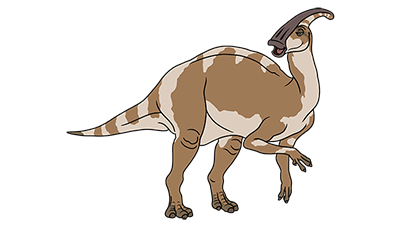Ask a Baraminologist: Large Animals
Lennart Hudel, CC BY 4.0 via Wikimedia Commons
Hey, kids, welcome back to our series “Ask a Baraminologist”! Please keep the questions coming. I will get to all of them as soon as I can. This week, we will answer multiple questions with a large animal theme.
Our first question comes from Kaleb, who asks, “I’d like to learn more about a unique zoological process called island gigantism. Why does it happen? What are some examples of it, and are many of the island giants extinct or endangered? Thanks!”
Great question, Kaleb. Island gigantism usually occurs in species whose closest relatives on the mainland are often toward the middle or bottom of the food chain. Since many large predators do not survive well on islands, as there is not enough space for them to have a normal range, animals lower on the food chain are freed from the fear of being eaten. As such, their stress is reduced, allowing them to get bigger. Many island giants have gone extinct, some from hunting, others from unknown causes. However, some survive quite well, like the New Caledonian giant gecko. Perhaps the most iconic island giant is the Komodo dragon, which dwarfs many of its mainland relatives.

Our next question comes from Renee, who asks, “Why do we put horseshoes on horses?”
Great question, Renee! Wild horses, zebras, and other members of the horse kind do not wear or need horseshoes, but domestic horses do. There are a variety of reasons for this. First, horses’ hooves grow constantly and must be trimmed. In the wild, running on hard surfaces wears down the hooves and helps keep them stable. This does not happen on a farm. Further, because domestic horses have been selectively bred for color, size, or speed, their hooves often have mutations, meaning they need extra support to stay functional. Horseshoes provide the support these horses need to keep living and working.

Our third question comes from Elana, who asks, “How do we know what dinosaurs sound like?”
Awesome question, Elana! The short answer is that we don’t. The sounds they make in dinosaur movies and shows are guesses. In some cases, when dinosaurs have special crests or nasal cavities, they may have made sounds similar to nasal trumpets. Others may have made sounds similar to crocodilian noises. We just don’t have the answer to that question, unfortunately.
Our final question comes from Elighe, who asks, “How do we know that ALL dinosaurs went extinct when we can’t even explore some places like the bottom of the ocean?”
Awesome question, Elighe! We don’t technically know that all dinosaurs are extinct. Some places are largely unexplored that might still house dinosaurs. However, dinosaurs are likely extinct. The reason for this is due to the need for reproduction. For the dinosaurs to make baby dinosaurs, they need a mate. So to keep a dinosaur species alive, at least two dinosaurs must be present, one male and one female. Generally, you need a whole population for a species to continue living for a long time. And even in the most unexplored regions of the world, it would be hard to hide a population of dinosaurs, even if they were small. This is especially true now that people have cell phone cameras. If someone saw a dinosaur, the odds are very high that they would take a picture and put it on the internet somewhere so other people could see it. Thus, most likely, dinosaurs are extinct. I’d love to be proved wrong on this; it would be super cool to see a living dinosaur. But it is not likely.
I hope these answers help you and are a blessing to you. Please feel free to keep sending in the questions; I’ll get to them as soon as I can! If you have a question, ask your parents to help you submit it here.
- © 2024 Answers in Genesis
- Privacy Policy
- Contact
- About
